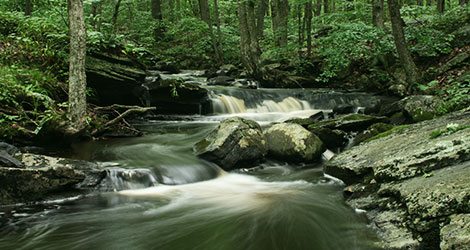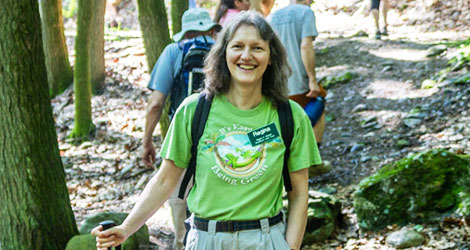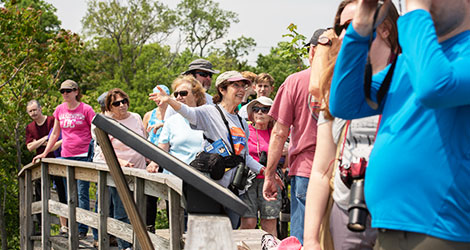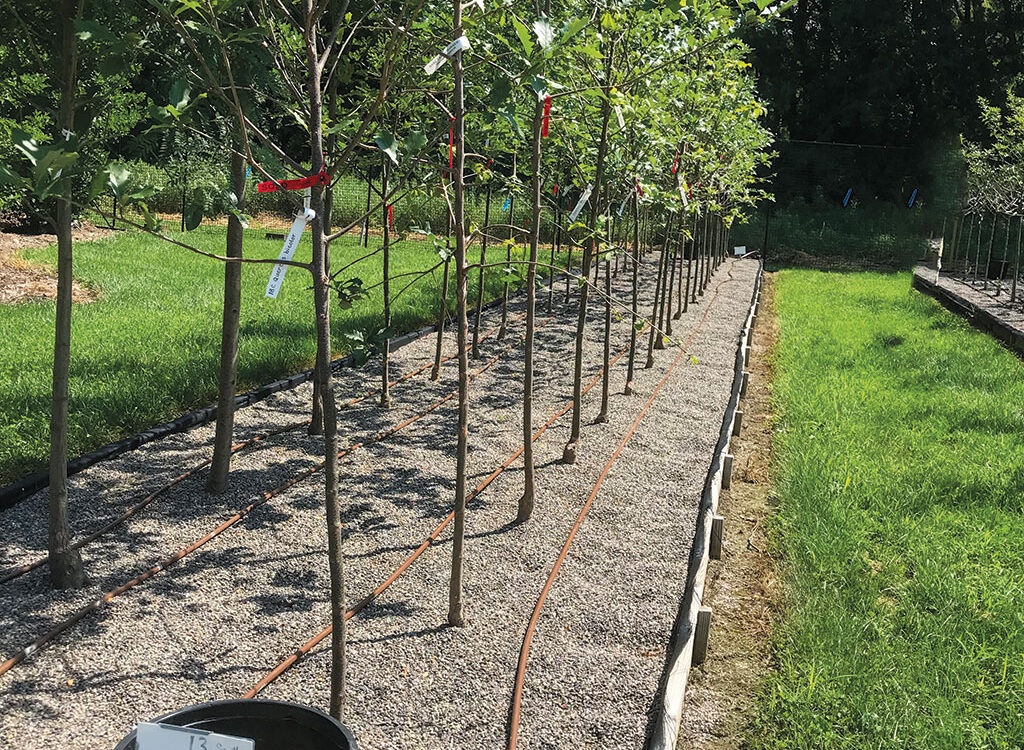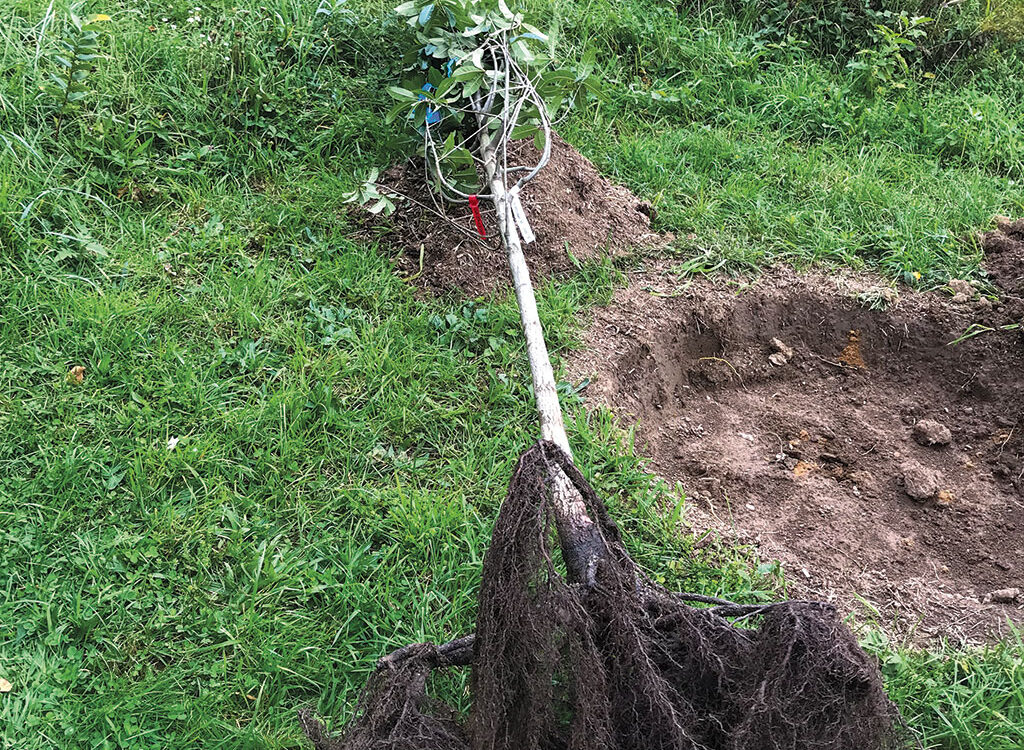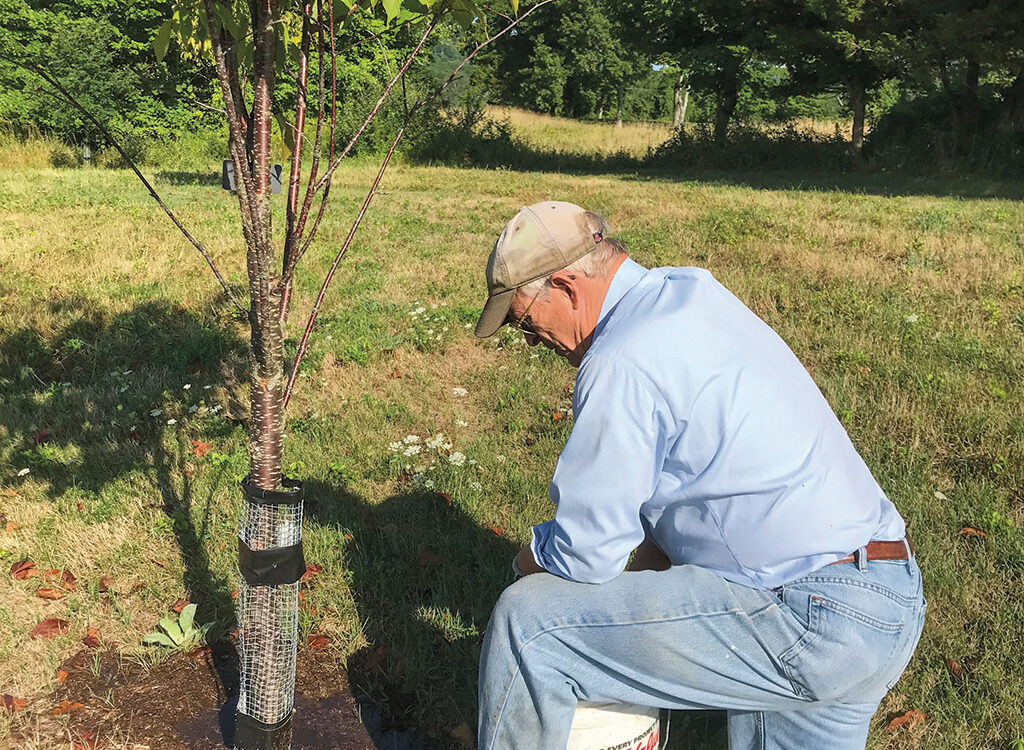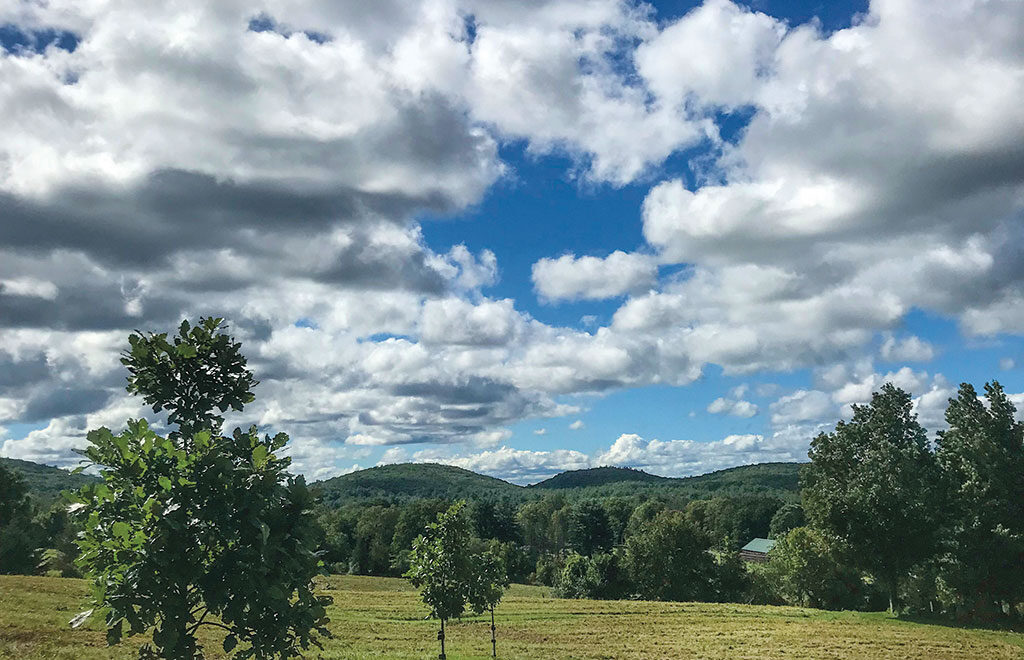
A New Arboretum Takes Root
Not quite five years old, visitors will enjoy the Holcomb Tree Trail for generations to come.
By Eric Lukingbeal
There’s a saying among arborists: the best time to plant a tree is 100 years ago, the next best time is today. Here’s my story of how five years ago, a small group of amateurs took this advice and started an arboretum in Granby.
Our trees won’t mature for fifty years; our grandkids will enjoy them, but we will not.
Arboretums must plan for the very long term.
I suppose I was always ready to do something with trees. I collected leaves in a scrapbook as a boy and learned to identify many trees at a YMCA camp. My father planted trees at our house and showed me how to dig the holes. And we had some big black cherry trees that I climbed. But the specific idea of starting an arboretum had not occurred to me.
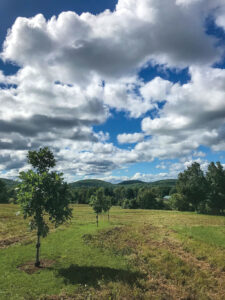
Then, sometime in 2016, my friend Barry Avery and I were talking about trees. Both of us had been planting trees for years at our houses, slowly getting rid of our lawns. We had served together on our local wetlands commission, and Barry had talked me into becoming a UConn Master Gardener. We agreed trees ought to be encouraged, for climate-related reasons as well as for sheer enjoyment. Barry now claims that I said to him, “Why don’t we start an arboretum?”
There was no real discussion. We were tree lovers and thought an arboretum would be used by the public and would make Granby a better community. We were both retired for a few years, and we were confident we could make it work, even without any formal training in arboriculture. Here in New England, trees want to grow. Our idea was to plant trees on fields at the 310-acre Holcomb Farm, which the Town has owned since 1991. These particular fields—about forty acres—had not been farmed or grazed since the 1970s and were being slowly reclaimed by invasives.
It took us two years to persuade the Town allow us to plant some trees. A nonprofit, Friends of Holcomb Farm, agreed that our plan fit well with their mission to “preserve, promote, and utilize the historic working farm,” and we became a project of their stewardship committee. We decided to call our arboretum the Holcomb Tree Trail.
The first 16 trees were planted in October 2018. All were grown by Rare Earth Nursery in Cazenovia, N.Y., utilizing the Missouri Gravel Bed system in which bare root trees are planted in 18 inches of sand and gravel and irrigated with nutrient-rich water. The roots respond vigorously, and when removed from the gravel, a seven-foot, inch-and-ahalf caliper tree can be easily picked up by a ten-year-old. These are much easier to plant than balled and burlap trees with heavy root balls. These 16 trees were Princeton elms, shingle oaks, swamp white oaks, basswoods, Kentucky coffeetree “Espresso” cultivars, and a black tupelo “Afterburner” cultivar. More trees have been planted every year, many from Rare Earth and some also sourced from O’Brien Nurserymen and Bosco’s Garden Center. There are now 90 new trees of more than 25 species. All are labeled and many are natives to the eastern U.S. We’ve also labeled 70 mature trees along woodland trails.

Tree Trail volunteers, left to right: Walt Zultowski, the author, Jack Lareau, Barry Avery.
The stewardship committee helped recruit volunteers to plant and care for the trees, which includes mulching and placing wire cages around the trunks to protect against buck rub and small mammal damage.
Volunteers also mow an extensive network of walking paths to the trees.
Holcomb Tree Trail design principles include: planting trees with spring bloom and fall color; planting trees in places that do not obstruct the long views of surrounding hills; planting around the edges of former fields to allow for future agricultural use; planting unusual trees that people haven’t seen; and planting trees that attract birds to improve habitat.
The two toughest challenges facing the Holcomb Tree Trail are watering and invasive plants. The nearest source of water is more than a quarter mile away. Water is transported via car in five-gallon buckets, then carried to the trees. In dry years, like 2020 and 2022, trees were watered more than 20 times, while in 2021, it rained over 50 inches between July and December, so no additional watering was needed. There is an abundance of invasives, including oriental bittersweet, multiflora rose, autumn olive, and Japanese barberry. Volunteer work crews remove these by hand or with mechanical tools. No herbicides are used.
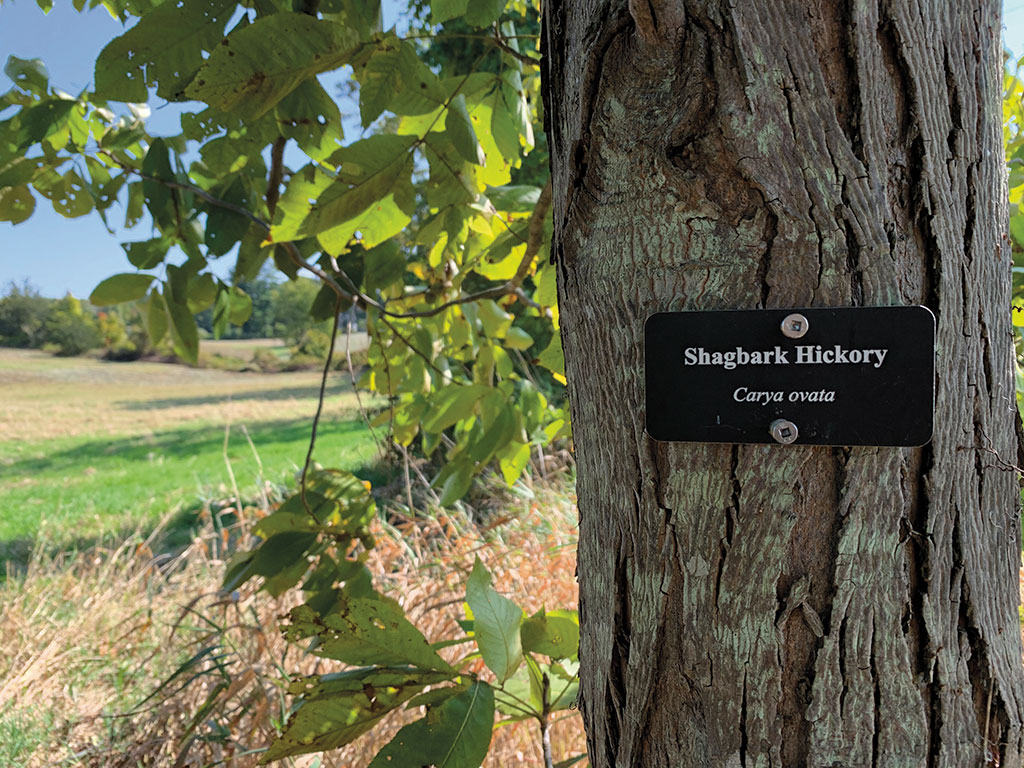
Our management has evolved over time. We are all volunteers. There are eight of us in addition to Barry and me—Jack and Peggy Lareau, Shirley Murtha, Cat Kadrle, Sue Canavan, Walter Ford, Walt Zultowski, and Heidi Lindberg. We meet monthly on Saturday morning to talk about what trees to plant, and where to plant them. We don’t always agree, and while there is a fairly wide variety of opinions, no punches are thrown. We also talk about what invasive removal projects deserve priority. We are forced to talk about succession issues, as some of us are in our seventies and we have quite a collection of knee and hip replacements. And of course, we talk about money, budget, and grants. So far, the total cost of the Tree Trail is about $25,000. We’ve had some generous gifts from individuals. I’ve run into walkers on the trails who’ve asked me where to send a contribution, and I’m not alone to have had this experience. We talk about our need to establish an endowment. Our trees won’t mature for fifty years; our grandkids will enjoy them, but we will not. Arboretums must plan for the very long term.
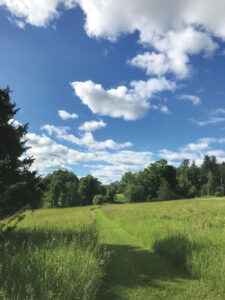
As the writer of this piece, I confess to an ulterior motive. I’d like to inspire others to start an arboretum in their towns. I’ll offer a few specific pieces of advice. Visit some arboretums and talk to their people. We visited more than a few (Connecticut College and Bartlett Arboretum among them) and got some good advice. Get a copy of “The Tree Book” by Michael Dirr and Keith Warren. Talk to folks at your local nursery. Be prepared for some disappointment; trees sometimes die for no apparent reason. Be prepared to make some mistakes. It’s not easy. But as the midwestern philosopher Woody Hayes said, “If it’s easy, it ain’t worth doing.”
No one should think that what we have done so far is due to our efforts alone.
We are fortunate because almost all of the Holcomb Farm land is now protected against any future development by a conservation easement granted by the Town to the Granby Land Trust last fall. First Selectman Mark Fiorentino led this effort, which had been discussed for decades. Granby Land Trust president Rick Orluk along with Friends of Holcomb Farm president Bob Bystrowski and its executive director Jenny Emery helped to garner public support for the project.
Many other organizations, as well as individual donors of money, equipment, and time continue to support the Tree Trail. The Tree Trail is open to the public and guided tours are available.
Eric Lukingbeal is a retired trial lawyer, and a former CFPA board member and president. He serves on the boards of the Granby Land Trust and Friends of Holcomb Farm. His favorite trees are the northern catalpa and black tupelo.

